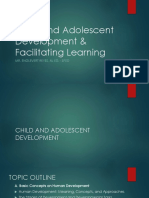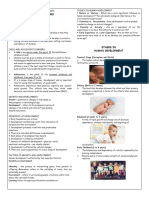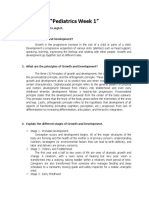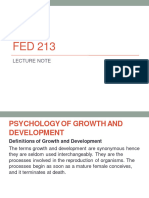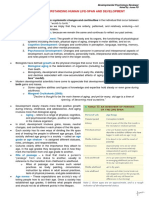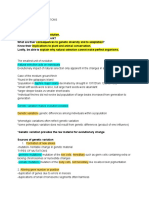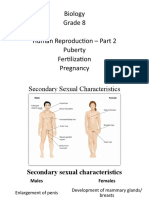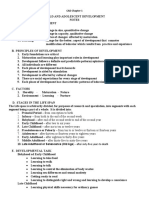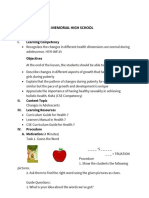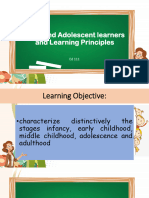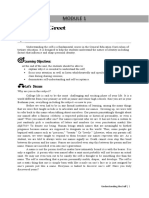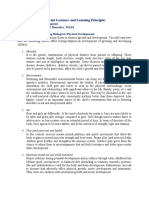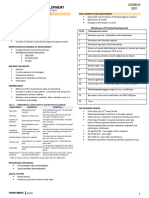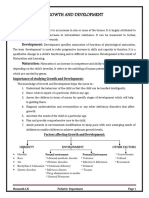CAD Chapter 1
CHILD AND ADOLESCENT DEVELOPMENT
NOTES
I. GROWTH AND DEVELOPMENT
A. DEFINITIONS
1.1 Growth - change in size, quantitative change
1.2 Development - change in capacity, qualitative change
series of changes affected by maturation
1.3 Learning - change for the better; aspect of development that connotes
modification of behavior which results from practice and experience
B. PRINCIPLES OF DEVELOPMENT
1. Early foundations are critical
2. Maturation and learning play important roles in development
3. Development follows a definite and predictable pattern(cephalocaudal & proximo distal)
4. All individuals are different
5. Each phase of development has its hazards
6. Development is aided by stimulation
7. Development is affected by cultural changes
8. There are social expectations for every stage of development
9. Each phase of development has characteristic patterns of behavior
C. FACTORS
1. Heredity - Maturation - Nature
2. Environment - Learning - Nurture
D. STAGES IN THE LIFE SPAN
The Life span is arbitrarily divided, for purposes of research and speculation, into segments with each
segment being a part of a whole. It is divided into:
1. Prenatal Period – from conception to birth
2. Infancy – from birth to the end of the second week
3. Babyhood – after end of the second week to end of the second year
4. Early Childhood – after two to six years
5. Late Childhood – after six to ten or twelve years
6. Preadolescence or Puberty – from ten to or twelve or thirteen or fourteen years
7. Adolescence - after thirteen or fourteen years to eighteen years
8. Early Adulthood – after eighteen to thirty-five years
9. Middle Adulthood – after thirty-five to sixty-five years
10. Late Adulthood or Senescence (Old Age) – after sixty-five years to death
E. DEVELOPMENTAL TASK
Babyhood ad Early Childhood
Learning to take food
Learning to walk
Learning to talk
Learning to control the elimination of body wastes
Learning sex differences and sexual modesty
Getting ready to read
Learning to distinguish right and wrong and learning to develop a conscience
Late Childhood
Learning physical skills necessary for ordinary games
� Building a wholesome attitude toward oneself as a growing organism
Learning to get along with age-mates
Beginning to develop appropriate masculine or feminine social roles
Developing fundamental skills in reading, writing, and calculating
Developing concepts necessary for everyday living
Developing conscience, a sense of morality, and a scale of values
Developing attitudes toward social groups and institutions
Achieving personal independence
Adolescence
Achieving new and more mature relations with age mates or both sexes
Achieving a masculine or feminine social role
Accepting one’s physique and using one’s body effectively
Desiring, accepting, and achieving socially responsible behavior
Achieving emotional independence from parents and other adults
Preparing for an economic career
Preparing for marriage and family life
Acquiring a set of values and an ethical system as a guide to behavior- developing an ideology
Early Adulthood
Getting started in an occupation
Selecting a mate
Learning to live with a marriage partner
Starting a family
Rearing children
Managing a home
Taking on civic responsibility
Finding a congenial social group
Middle Age
Achieving adult, civic, and social responsibility
Assisting teenage children to become responsible and happy adults
Developing adult leisure time activities
Relating oneself to one’s spouse as a person
Accepting and adjusting to the physiological changes of middle age
Reaching and maintaining satisfactory performance in one’s occupational career
Adjusting to aging parents
Old Age
Adjusting to decreasing physical strength and health
Adjusting to retirement and reduced income
Adjusting to death of spouse
Establishing an explicit affiliation with members of one’s age group
Establishing satisfactory physical living arrangements
Adapting to social roles in a flexible way



